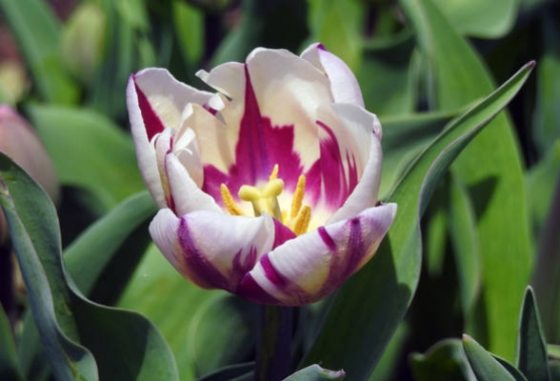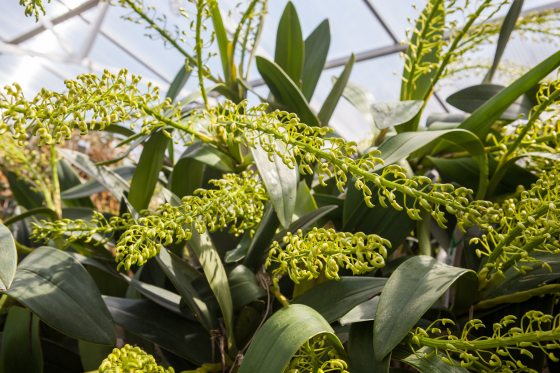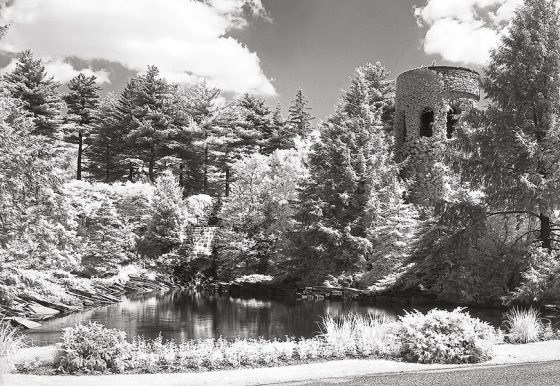Our Blog
Blog All Items Title
All Recent Articles

The Botany of Beer
For the past several years, we have been working closely with Victory Brewing Company to create a unique collection of botanically-inspired beers. While some of the ingredients used in flavoring these beers have come to us from around the world, others were grown right here at our Gardens. All, however, possess rich botanical histories that have imbued these beers with a unique character (and flavor!) that is quintessentially Longwood. Get to know our brews better by taking a closer look at some of the plants essential to our brewing process.

Designing Longwood’s Fireworks & Fountains Shows
When it comes to fireworks at Longwood, our legacy runs deep—or, rather, sky high.

Pipe Dreams
Open Organ Console Day invites guests to try their hand at playing The Longwood Organ.

Eco-friendly Home Gardening
What does it take to be an ecological gardener, beyond filling landscapes with a diverse selection of native plants? While the vast majority of our native fauna depend on plants directly or indirectly for their survival, many animals also have specific environmental needs that must also be met, as the physical environment of the garden provides shade, shelter, and living space for its residents.

A Talk and Book Signing at Longwood Gardens
This week, Kevin Sharkey and I participated in a garden discussion and book signing at the exquisite Longwood Gardens in Kennett Square, Pennsylvania. More than 1,450 guests attended the talk in the historic Open Air Theatre.

Leadership Gone Global
As nature is ever-evolving and multi-faceted, so is the operation of gardens themselves. As part of the Longwood Gardens Fellows Program, our Fellows spent two months at individual field placement sites across the globe to learn from thought leaders, as well as to share and grow their own expertise.

Plant Exploration in Azerbaijan
Plant exploration is vital to bringing new and potentially useful plants to Longwood Gardens. These plants may be used for various purposes: creating displays, systematically building our collection of over 11,000 types of plants, breeding new plants, or for plant conservation. For the past two years we have targeted the Caucasus region, which encompasses the countries of Armenia, Azerbaijan, and Georgia, to search for new hardy plants.

A Plantsman’s Journey Through the Hillside Garden
The Hillside Garden is a magical place at any time of year, offering guests a tranquil retreat brimming with diverse floral displays, a plethora of foliage and textures, and quiet places to sit and reflect. But as spring sets in, the Hillside truly becomes a plant-lover’s paradise.

A Tale of Beauty, Rarity, and Mania
Every spring, thousands upon thousands of beauty-seekers head to Longwood Gardens to take in one of our most spectacular sights—our beloved tulips. Ever-changing and always stunning, our tulip display is undeniably gorgeous, but what is it about the tulip itself that draws so much attention and wonder? Why are we so attracted to this seemingly simple flower? The answer may go far beyond the tulip’s beauty and instead lie in mankind’s fascination with the unattainable.

Community Read: A Conversation with Hope Jahren
We are proud to welcome Hope Jahren to Longwood Gardens on March 24, 2018, for Celebrating Women in Science and Horticulture, and for A Community Conversation. Recently we had the opportunity to ask the author some questions about her life as a scientist, and about writing her national bestseller, Lab Girl.

The Allure of Blue
Every March, a special botanical and horticultural rarity goes on display that creates a palpable excitement and fervor among our guests—the fabled Himalayan blue-poppies (Meconopsis ‘Lingholm’). They are poster children for a horticultural pursuit from which no plant group is immune—the quest for blue flowers. There are other blue-flowered plants, but why are they so rarely encountered and why are they so alluring?

A Flower Show Tribute to a Visionary Heiress
Dorrance ‘Dodo’ Hamilton was a longtime and avid supporter of the Pennsylvania Horticultural Society. She passed away in April of 2017. Many know her as an heiress to the Campbell Soup fortune; those of us in the Brandywine Valley region remember her more for her outstanding entries in The Philadelphia Flower Show for so many years.

Celebrating Women in Science: A Community Read
Our 2018 Community Read, now in its fifth year, features three titles and a multitude of activities that celebrate female scientists: Lab Girl by Hope Jahren, Women in Science by Rachel Ignotofsky, and The Tree Lady by H. Joseph Hopkins. At Longwood, our dedicated staff, students, and volunteers—many of them women—work behind the scenes to bring you the beauty of our Gardens through the art and science of horticulture.

“Orchid Extravaganza” at Longwood Gardens
I love visiting gardens whenever I can, especially during this time when many conservatories are filled with colorful orchid displays. If you're in or near historic Kennett Square, Pennsylvania from now through March 25th, I encourage you to make a stop at Longwood Gardens to see the annual “Orchid Extravaganza.”

Extra! Extra! It’s Orchid Extravaganza!

Longwood Staff Assist with Hurricane Irma Recovery
Four months after Hurricane Irma slammed into Florida’s Gulf Coast, some public gardens are still picking up the pieces. On December 10, 2017, Longwood sent a team of 12 staff members to Florida to assist with post-hurricane recovery at Montgomery Botanical Center (Coral Gables), Naples Botanical Garden, and Vizcaya Museum and Gardens (Miami), all of which suffered extensive damage.

That Mysterious Place
Now that the Main Fountain Garden is open, visitors can once again access the lower half of one of the most mysterious features at Longwood—the Chimes Tower. Kids and grown-ups alike are fascinated by this fairytale structure that stands prominently in the landscape.

A Longwood Christmas à la Française!
This year, our horticulturists are celebrating Christmas with a French flair, heralding the season with many a fleur-de-lis. You’ll spy this floral symbol of French royalty throughout our Conservatory—as ornaments on trees, in the design of the fruit floating on the Fern Floor of Exhibition Hall, and in the living wreath near the Potting Shed. A sense of luxury and opulence weaves through our Garden spaces, creating a tapestry of exquisite details. In a single visit, transport yourself to the palatial rooms of Versailles or to the quiet countryside of Provence, with your imagination as your passport.

Nurturing Rainbows
The completion of the Main Fountain Garden in 1938 is followed by periodic change and transformation.

The “Nuts & Berries” of our Parterre Garden
Longwood’s Christmas display develops around a theme—some unifying concept that ties together the colors and imagery throughout the Conservatory. The theme is chosen by our horticulture staff, who then involve colleagues from throughout the Gardens to brainstorm ideas and come up with different ways to express the theme. This year we were inspired by the motifs of classical French design. As soon as the French theme was chosen, we all agreed, “There must be a parterre garden!”
